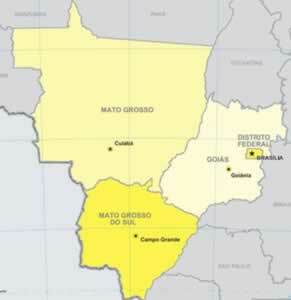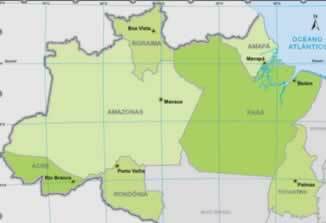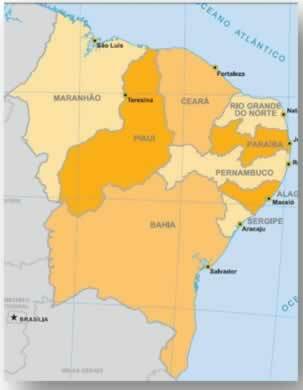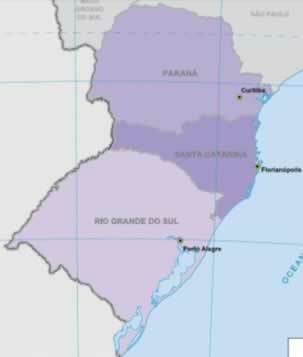Brazil is a country with enormous territorial extension and continental proportions. To facilitate its administration and political organization, there was a division of governments, namely: federal, state and municipal. Thus emerged the states and municipalities.
States are also known as Federation Units. In total, Brazil has 26 states, plus the Federal District. Every state has a capital, where political and administrative decisions are taken. To administer each Unit of the Federation there is a governor, representing the executive power; and state deputies, representatives of the legislative power.
The Brazilian states are located in 5 five regions: Midwest, North, Northeast, South and Southeast.
The states that make up the Midwest are: Goiás, Mato Grosso, Mato Grosso do Sul and the Federal District.

The North region is home to the following states: Acre, Amazonas, Amapá, Pará, Rondônia, Roraima and Tocantins.

The Northeast covers Alagoas, Bahia, Ceará, Maranhão, Piauí, Pernambuco, Paraíba, Rio Grande do Norte and Sergipe.

The South is made up of Paraná, Rio Grande do Sul and Santa Catarina.

The southeast region is home to the states of Espírito Santo, Minas Gerais, Rio de Janeiro and São Paulo.

There are many differences between Brazilian states. This can be verified by the amount of population, demographic density, territorial extension, number of municipalities and economic aspects.
For example, Amazonas is the state with the largest territorial extension, occupying approximately 17% of the Brazilian territory. The state of Sergipe is the smallest state in the Federation, occupying an area of less than 0.5% of the country.
The customs, traditions, culture, music, cuisine and accent are also different between the states. Goiás, located in the Brazilian Midwest, for example, is known for its country music, with life linked to the rural environment. Rio Grande do Sul is known for its cuisine, with barbecue and chimarrão.
The important thing is to know that these differences exist and to respect them. Each state has its particularity and all contribute to the greater good of the Brazilian nation.
By Regis Rodrigues
Graduated in Geography



